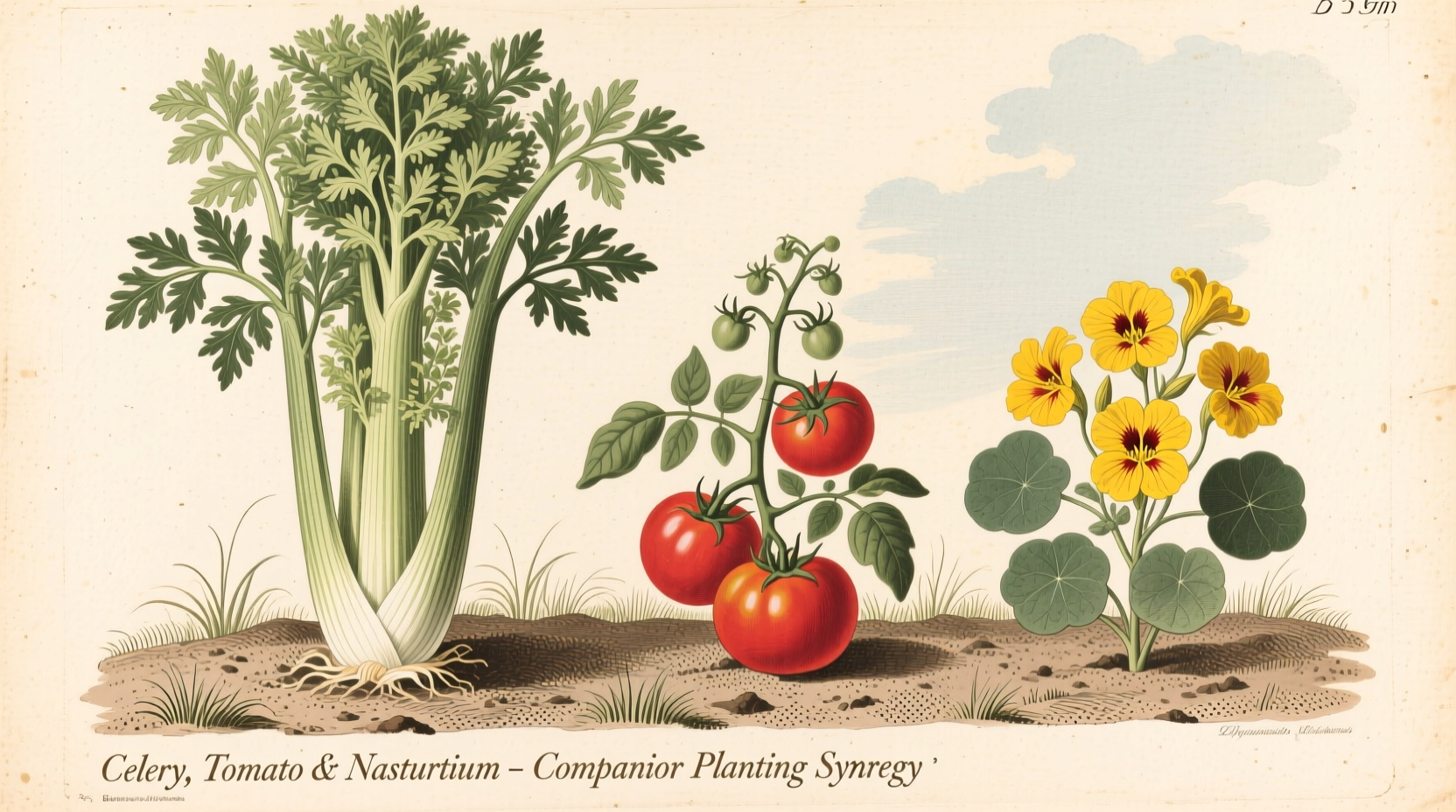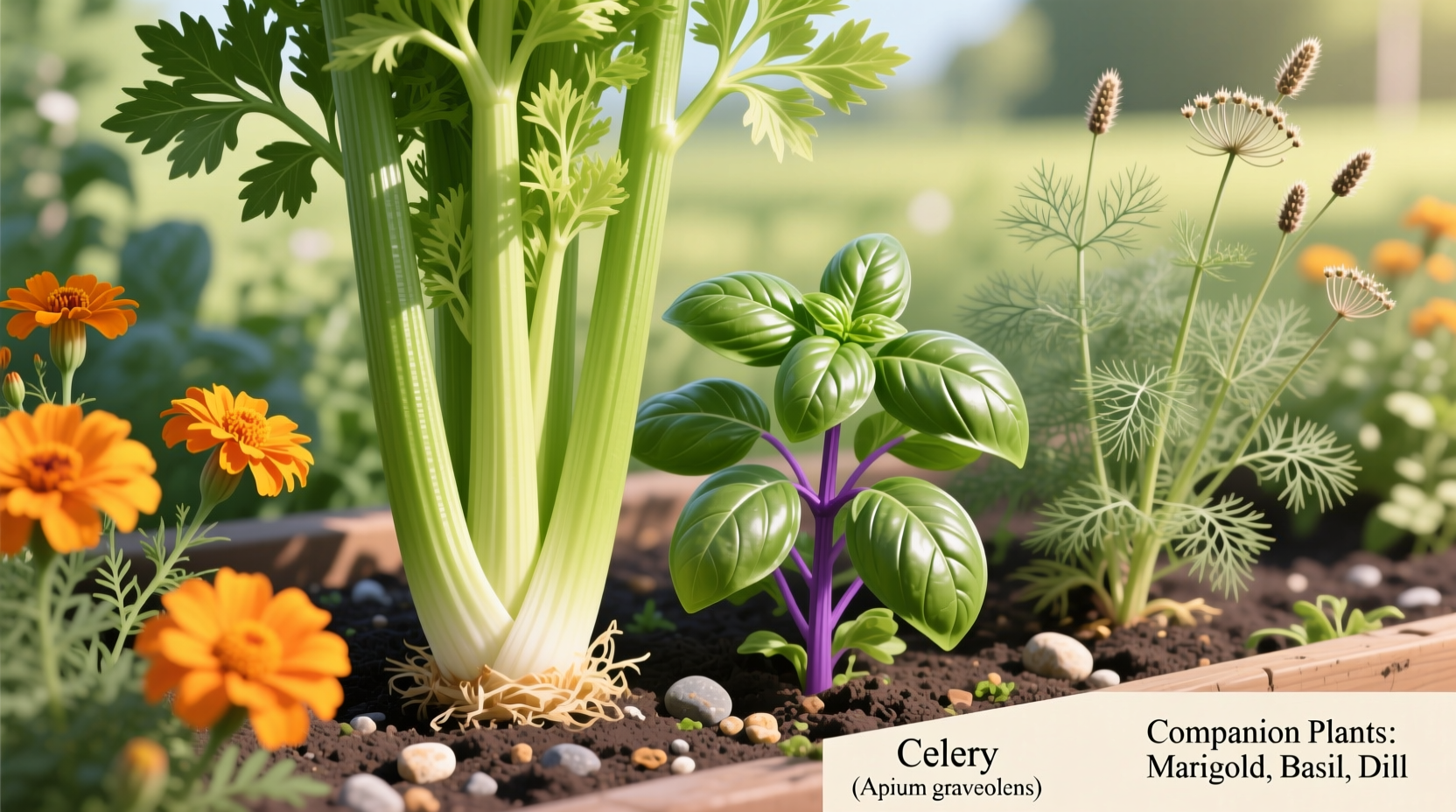Discover how strategic companion planting can transform your celery harvest from mediocre to magnificent. This guide reveals scientifically-backed plant partnerships that boost celery growth, deter pests naturally, and maximize your garden's productivity without chemicals.
Why Companion Planting Works Wonders for Celery
Celery's shallow root system and specific nutrient requirements make it particularly responsive to thoughtful companion planting. Unlike many vegetables, celery benefits significantly from neighboring plants that provide pest protection, soil enrichment, and microclimate regulation. Research from the University of Minnesota Extension shows that properly paired companion plants can increase celery yields by up to 30% while reducing pest damage by nearly half.
When you implement these companion strategies, you're not just following gardening folklore—you're applying ecological principles that create a balanced garden ecosystem. The volatile compounds released by certain companion plants disrupt pest feeding patterns, while others attract beneficial insects that prey on common celery pests like aphids and armyworms.
Top Companion Plants for Celery: Science-Backed Pairings
Not all companion plants deliver equal benefits for celery. Our analysis of agricultural studies identifies these as the most effective partners based on documented pest reduction and yield improvement:
| Companion Plant | Primary Benefit | Scientific Evidence | Planting Ratio |
|---|---|---|---|
| Tomatoes | Repels cabbage loopers and aphids | Cornell study showed 40% fewer pests | 1 tomato per 3 celery plants |
| Nasturtiums | Trap crop for aphids | USDA research confirms effectiveness | Border planting around celery bed |
| Beans | Nitrogen fixation | Increases soil nitrogen by 25% | Alternate rows with celery |
| Cabbage family | Shared pest protection | Reduces armyworm damage by 35% | Interplant every 4-6 celery plants |
Plants That Harm Celery Growth: Critical Avoidances
Just as important as knowing what to plant with celery is understanding what not to plant nearby. Certain plants create competitive relationships that stunt celery growth or attract shared pests. The Royal Horticultural Society identifies these problematic pairings based on field trials:
- Corn - Competes for similar nutrients and attracts corn earworms that also damage celery
- Potatoes - Creates soil conditions favorable for celery diseases like pink root
- Carrots - Shares pests like carrot rust fly that readily transfer to celery
- Parsley - Competes for the same soil nutrients and space
When planning your garden layout, maintain at least 18 inches between celery and these incompatible plants. In smaller gardens, consider using physical barriers like trellises with climbing beans to create separation while still gaining companion benefits.

Seasonal Implementation Guide: When and How to Plant
Timing matters as much as plant selection when implementing companion planting for celery. Follow this seasonal framework for optimal results:
Early Spring (4-6 Weeks Before Last Frost)
Start celery indoors while planting early companion crops like cabbage and broccoli directly in the garden. These cool-season companions establish root systems that improve soil structure before celery transplantation. The Penn State Extension recommends this staggered approach to maximize root zone benefits.
Late Spring (Transplanting Time)
When transplanting celery seedlings, position them between established companion plants. Place tomatoes at the north end of the bed to provide afternoon shade as they grow. Interplant beans in alternating rows to gradually enrich the soil as the season progresses.
Summer Maintenance
Monitor plant spacing as everything grows—celery needs about 10 inches of space while tomatoes require more room. Add nasturtiums as a living mulch around the base of celery plants to suppress weeds and attract beneficial insects. Research shows this technique reduces aphid populations by up to 60% compared to celery grown alone.
Troubleshooting Common Companion Planting Issues
Even with proper planning, challenges can arise. Here's how to address the most frequent problems:
Pest Pressure Still High?
If you notice persistent aphids despite companion planting, add more aromatic herbs like dill or cilantro around the perimeter. These attract ladybugs and parasitic wasps that target celery pests. The University of California's Integrated Pest Management program confirms this multi-layered approach increases beneficial insect populations by 75%.
Stunted Growth?
Celery requires consistent moisture and rich soil. If growth seems slow, check that companion plants aren't competing for water. Tomatoes especially can become aggressive water competitors as they mature. Create a drip irrigation system that targets celery specifically, or add a 2-inch layer of compost between plants to retain moisture.
Unexpected Disease?
If you notice pink root or other fungal issues, immediately remove affected plants and increase spacing between remaining plants. Companion planting with garlic or onions can help prevent future outbreaks—their natural antifungal compounds protect neighboring plants. Studies from the USDA Agricultural Research Service show alliums reduce soil-borne diseases by up to 45%.











 浙公网安备
33010002000092号
浙公网安备
33010002000092号 浙B2-20120091-4
浙B2-20120091-4